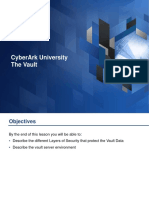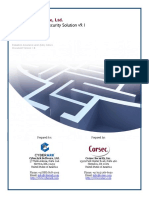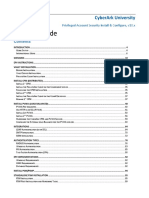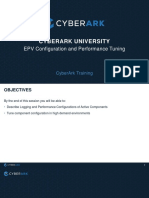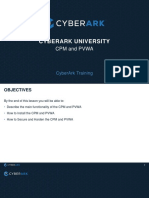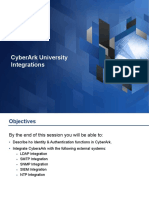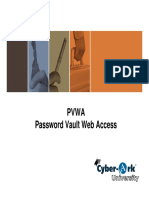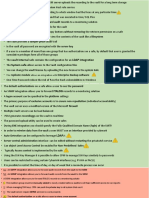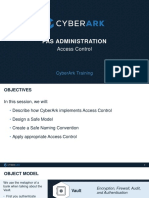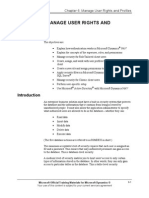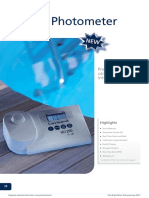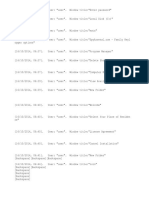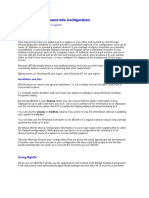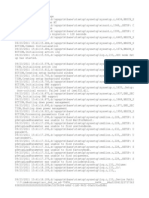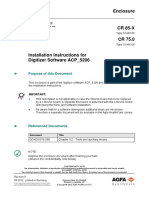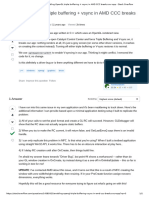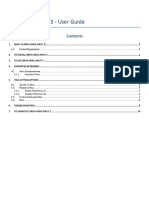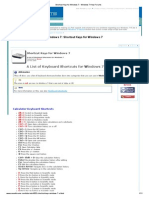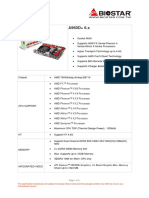0% found this document useful (0 votes)
210 views28 pages09 PAS Fundamentals Access Control
This document discusses implementing access control for passwords in CyberArk by designing a safe model. It explains that safes control access to passwords and only authorized safe members can access safe data. When defining a safe model, the document recommends considering factors like organizational structure, functional structure, security levels, and individual criteria to separate password objects into logical groups. The example shows splitting passwords into safes based on criteria like platform, team, and application to grant different user groups appropriate access while restricting access as needed.
Uploaded by
Oliver QuiambaoCopyright
© © All Rights Reserved
We take content rights seriously. If you suspect this is your content, claim it here.
Available Formats
Download as PDF, TXT or read online on Scribd
0% found this document useful (0 votes)
210 views28 pages09 PAS Fundamentals Access Control
This document discusses implementing access control for passwords in CyberArk by designing a safe model. It explains that safes control access to passwords and only authorized safe members can access safe data. When defining a safe model, the document recommends considering factors like organizational structure, functional structure, security levels, and individual criteria to separate password objects into logical groups. The example shows splitting passwords into safes based on criteria like platform, team, and application to grant different user groups appropriate access while restricting access as needed.
Uploaded by
Oliver QuiambaoCopyright
© © All Rights Reserved
We take content rights seriously. If you suspect this is your content, claim it here.
Available Formats
Download as PDF, TXT or read online on Scribd
/ 28



